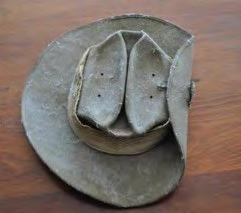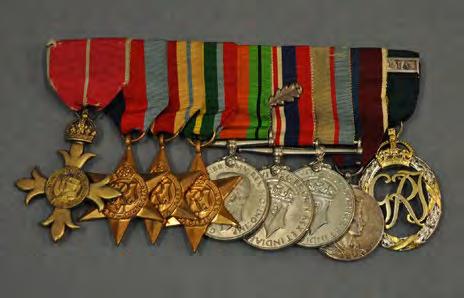
12 minute read
West Torrens
Eclectic mix of cultures make West Torrens community
Conveniently located directly west of Adelaide’s Central Business District (CBD), West Torrens is ideally situated between the city and western beaches, comprising around 62,000 residents and spanning an area of 37 square kilometres.
Advertisement
Being home to Adelaide Airport and Great Southern Railway, West Torrens is a gateway for travellers from overseas and interstate, with many new arrivals choosing to make this city their home, as the demographic consists of an eclectic mix of new migrants and nationalities. As a result, West Torrens celebrates a vibrant mix of cultures, customs, cuisines and music. One of the best ways to enjoy the cultures on show in West Torrens is to attend one of the many festivals. The city buzzes with energy, particularly during the warmer months, with events including the Summer Festival series, Thai Festival, Dimitria Greek Festival, Philippine Fiesta, Fire and Spice, Kodomo no Hi Japan Festival and many more. The City of West Torrens Council understands the importance of supporting the creativity of its local community and, each year, offers an annual Art Prize worth $13,000 in prizes to aspiring artists in the local area and beyond. It also provides a free gallery space for artists to exhibit their work, and as a result of the COVID-19 outbreak, the Council helped the arts industry get back on its feet by providing a COVID-19 Arts and Culture Grants program totaling $50,000. Striving to be the best place to live, work and enjoy life, West Torrens offers access to an abundance of reserves, playgrounds, state-of-the-art community facilities and an extensive network of cycling and walking paths. Outdoor facilities and urban greening play an important role in community health, ecosystem function and economic activity and, as such, the City of West Torrens Council is always seeking opportunities to add more greening and undergo other initiatives aimed at shading and cooling suburbs. There are a variety of residential and industrial areas and a number of retail shopping precincts, including Harbour Town and the Mile End Homemaker Centre. The area is in a state of economic change and growth, with new housing developments, roadways and shopping facilities being developed.

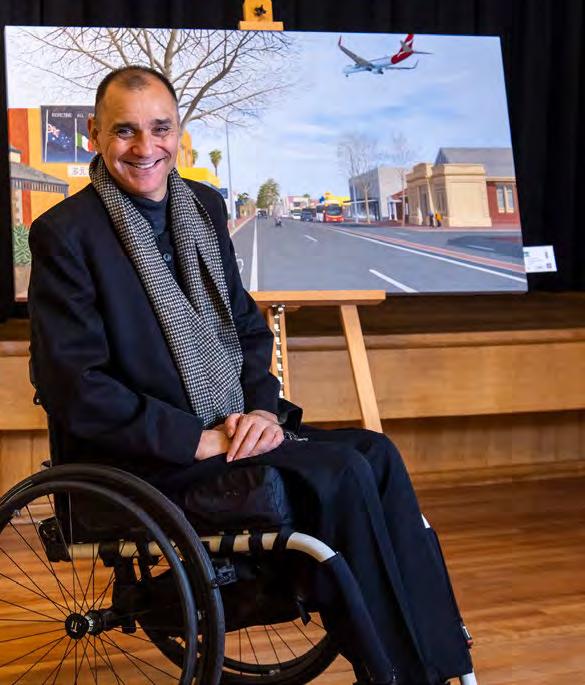
West Torrens a creative community
Located directly to the west of the Adelaide CBD, the City of West Torrens is proud to support our creative community through: • $13,000 West Torrens Art Prize • Community Grants and Sponsorship program • paid performances at community events 84 THE LAST POST – 2021 ANZAC DAY EDITION• free exhibition space in our community gallery. Find out more at westtorrens.sa.gov.au
Harley ride to Yorke Peninsula
I recently embarked on a 4-day bike ride taking in the Yorke Peninsula.
Total distance travelled was 1310 kls, quite a ride huh. Tender bum towards the finish. My riding partner and tour guide is John White a terrific man whose knowledge of places and geography is quite amazing. He (almost) always knows how to get where we’re going. I’m the tail-gate Charlie. Our ride commenced at Williamstown, via Barossa, Clare, into Moonta and then downwards around the coast road of the Yorke leg. The riding conditions varied from ideal, warm and little breeze to cloudy, cool with a threat of rain. Country folk are so nice, friendly, courteous and obliging always. Riding along people waved and we waved back – and vice versa... from vehicles too. In every town or township we always travelled at 20-30ks so that we could soak in the surroundings and touristy sights. It was a great ride together, we both enjoyed it and I thank John for his company and guidance. The Places We Rode Through: Mercato (coffee start), Kersbrook, Williamstown, Seppelstfield, Kapunda, Marrabel, Saddleworth,Burra, Mintaro, Clare, Moonta, Port Hughes, Maitland, Port Victoria, Stansbury, Wool Bay, Edithburgh, Marion Bay, Innes National Park, Corny Point, Stenhouse Bay, Inneston, Blyth, Ardrossan, Port Julia, Black Point, Port Wakefield, Balaklava and Mallala.
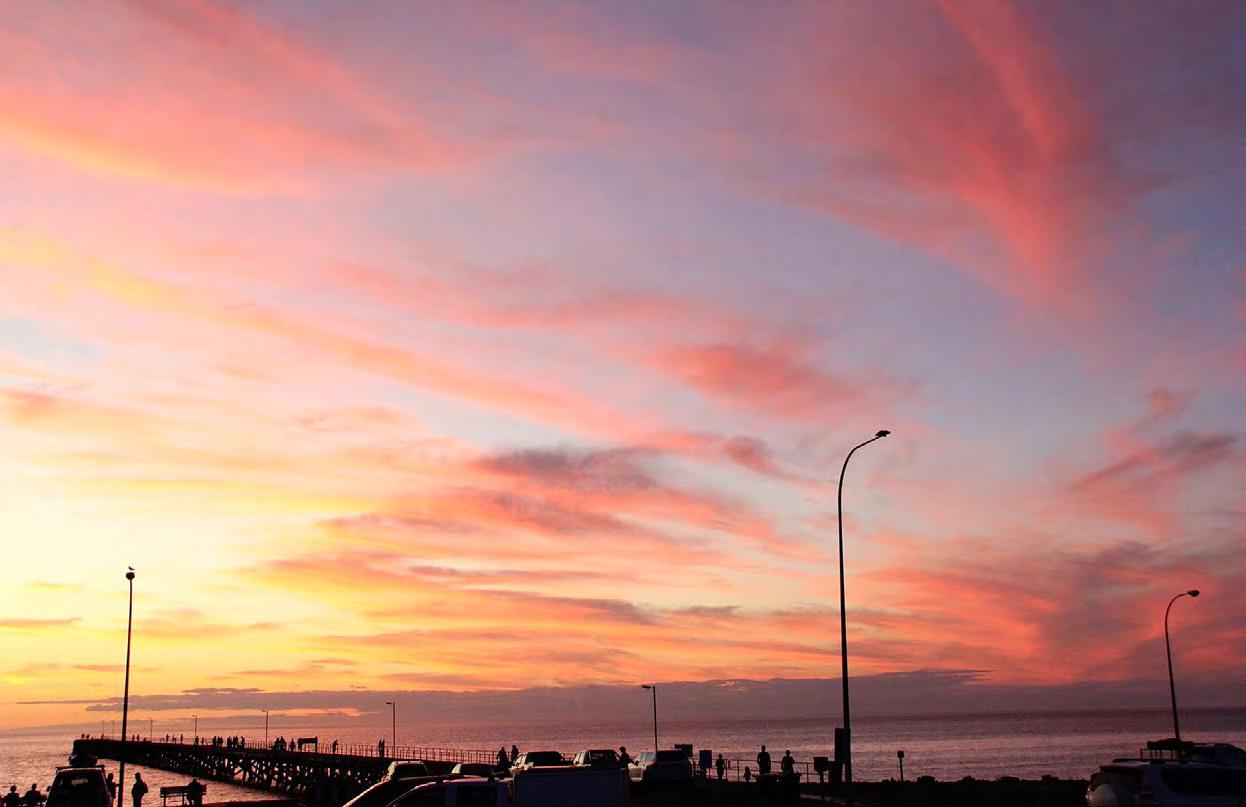
FRANK SEBASTYAN


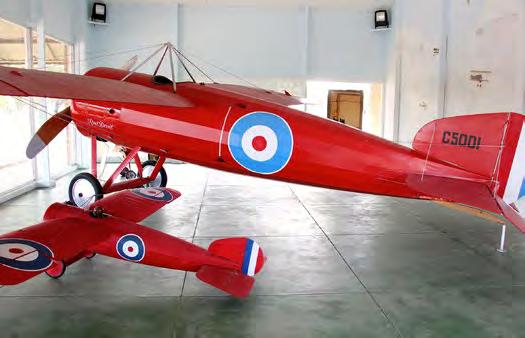

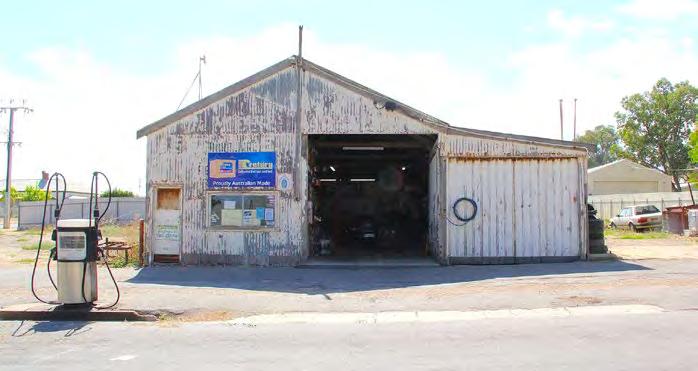
Frank with his Harley Davidson Heritage Softail Special
Remembering
Ted Carse and Operation Jaywick
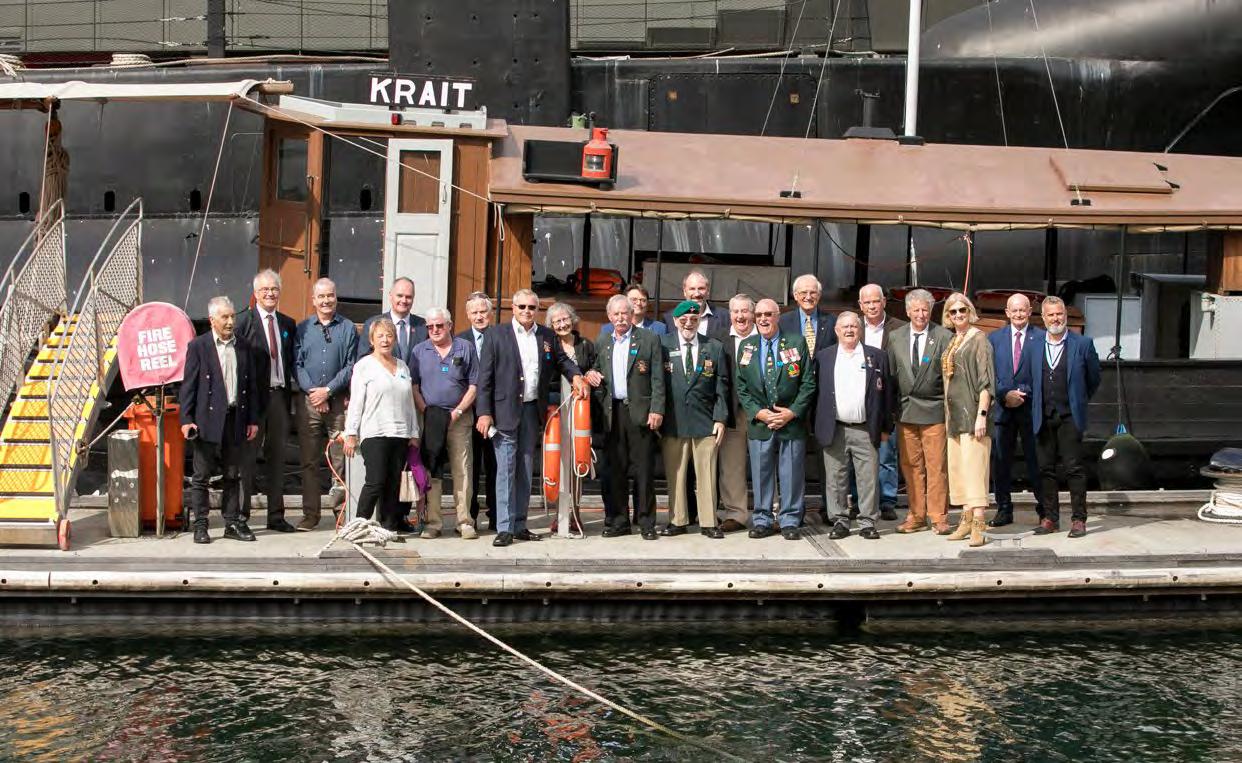

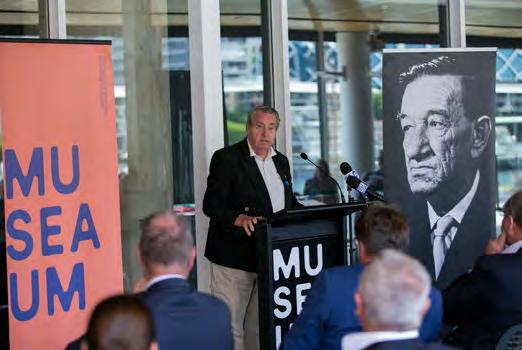
The Australian National Maritime Museum welcomed historical items related to the famous Operation Jaywick into the National Maritime Collection at a ceremony on Tuesday April 20.
The items, a collection of significant objects associated with Lieutenant Hubert Edward ‘Ted’ Carse and Operation Jaywick, an Allied commando raid against Japanese shipping in Singapore Harbour in September 1943. The objects were sold recently via auction in London. The objects, a faux Japanese flag, medals and knife are of great national significance to Australia. The purchase was possible due to the Australian Government’s support through the National Cultural Heritage Account and museum Foundation through the generosity of the families of Ted Carse’s brothers.
THIS PAGE, CLOCKWISE FROM TOP: Carse family members with former commandos and museum staff. Former Commando Allan Miles OAM, recanting his experiences with Ted Carse. Mary Carse, Ted Carse’s niece telling stories of her memories of her uncle. OPPOSITE PAGE, CLOCKWISE FROM TOP LEFT: Ted Carse’s knuckle knife. Carse family members with museum staff. VIPs representing the Carse family, Navy, museum, War Memorial with Minister Fletcher (holding a prop version of the flag). The faux Japanese flag that was flown on Krait during Operation Jaywick. Ted Carse’s medals.
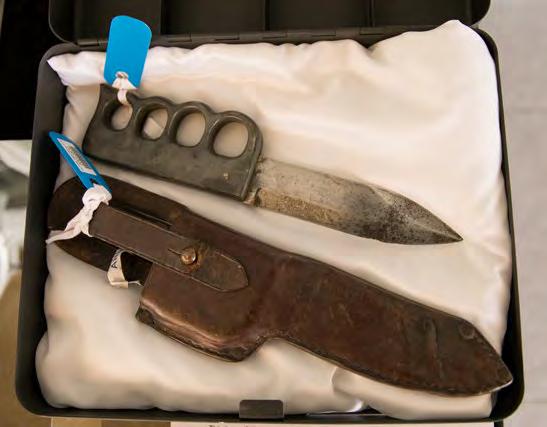
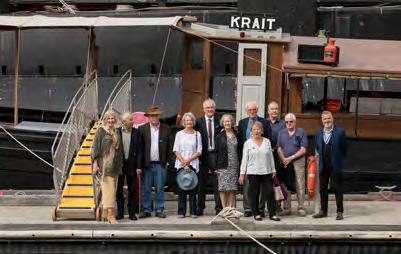



Thanking those who have and continue to serve our nation
At CSC, we believe in the importance of experience. For over 30 years, we’ve provided superannuation services to employees of the Australian Government and members of the Australian Defence Force. We’re committed to giving our members the retirement that they deserve. And because we understand them like no one else, we can. As a way of saying thanks, we’re honoured to provide every Defence Force veteran, serving member and cadet with complimentary entry to the Australian National Maritime Museum, and half-price entry for accompanying friends and family.

The museum is Australia’s national centre for maritime collections, exhibitions, research and archaeology. With a CSC defence entry ticket you can enjoy several headline exhibitions free of charge. Climb aboard an actual submarine and venture into the secret world of underwater warfare on the HMAS Onslow. Guided tours are now available and numbers are strictly limited. While you’re there, visit the Wildlife Photographer of the Year exhibition, which captures the unique moments and diversity of life on Earth. For family fun, head to Map It! and explore the role that mapping and navigation play in everyday life. With our long history serving members of the ADF, we greatly value the commitment and loyal service of our veterans, serving members and cadets. If you’re a Defence Force veteran, a serving member, or a current cadet, show the ticket desk your valid ADF ID card, a DVA-issued card, service medals, or arrive in uniform, for free entry as well as access to the friends and family discount. You can find out more about the partnership at csc.gov.au #BeSuperAppreciated

This offer is made through the partnership between CSC and the Australian National Maritime Museum
Disasters are our business
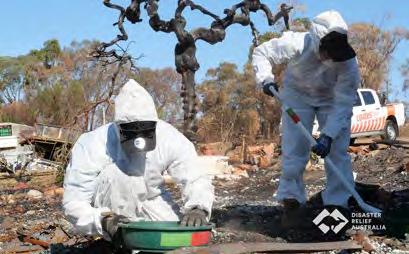

Disaster Relief Australia (DRA) unites the skills and experiences of military veterans, emergency responders and civilians to rapidly deploy disaster relief teams domestically and around the globe.
Integrating into existing emergency management arrangements where possible, Disaster Relief Australia can operate independently or as part of an integrated taskforce. DRA provides incident management, damage and impact assessment, aerial damage assessment and mapping, work order management, spontaneous volunteer management, debris management and restoring access, expedient home repair and resilience and capacity building. In 2021, DRA has deployed two major operations across Australia. Operation Woods in the Perth Hills in response to the February bushfires and Operation Elliot in NSW after the catastrophic flooding in March.
Veterans are our passion
Led by veterans, Disaster Relief Australia seeks to change the narrative around the Australian veteran. DRA improves veterans’ wellbeing by providing them the opportunity to continue to serve communities devastated by natural disaster. In doing so, they are able to regain a sense of purpose and identity not found since their military service. DRA recognises that veterans hold a unique and valuable skill set. Australian veterans are a national asset, and DRA seeks to showcase that to the world.
Our story
Disaster Relief Australia (DRA) was launched in 2020, after a tenure as Team Rubicon Australia, which was founded in August 2016. Our first disaster relief operation was launched in April 2017 in response to the devastation wrought by Tropical Cyclone Debbie. This operation, dubbed Operation Dunlop, after WWII Surgeon Sir Ernest Edward ‘Weary’ Dunlop, saw DRA deployed to the hard-hit town of Proserpine in North Queensland. For over three weeks 62 volunteers worked tirelessly to help the greater Proserpine community recover from the disaster. As importantly, we proved that military veterans are ideally suited to conduct this type of work. The journey to Proserpine started in 2013, when a model of disaster relief utilising veterans was tested in the United States. The model was imported and contextualised to Australian backdrop. Subsequently, a commitment was made that has now become their mission statement: To be the pre-eminent disaster relief organisation in the AsiaPacific Region, and in doing so, change the narrative around what it means to be a veteran in Australia. Disaster Relief Australia was born of this commitment, and is a fully independent AustralianRegistered Charity. In 2020, we took the step to become a truly unique Australian organisation. Since 2016, we have grown from the fledgling efforts of two stubborn veterans to a nationwide movement. With over 2500 members and 7 fully operational Disaster Relief Teams (DRTs) in Brisbane, Sydney, Melbourne, Townsville, Adelaide, Perth and Canberra, DRA represents a significant capability. We have proven that capability on 20 disaster relief operations both domestically and internationally, helping thousands of disaster survivors. Over the next 4 years DRA will expand from 7 to 12 DRTs around Australia. In the spirit of WWI veterans returning to build the Great Ocean Road, DRA has reinvented the idea that veterans are some of most highly trained civic assets, with skills and experience to be harnessed. They are anything but victims, they are Built to Serve.
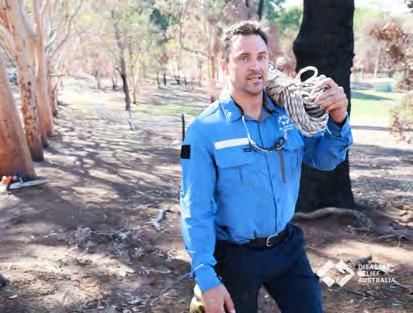


MEDALS, UNIFORMS AND HATS
When we look at the heirlooms commonly passed down within families, medals and military uniforms are often highly treasured.
While there is a view that uniforms are mass produced (and this is certainly the case with modern uniforms), during the First World War especially, this was not always the case. To be sure, there was an official uniform pattern, but many of the people heading to the front lines went to their family tailors and had custom bespoke uniforms manufactured. This means that WW1 uniforms in particular can show quite a wide range of subtle differences when studied by the trained eye. The fur used to make the felt for hats, the wool in uniforms and other decoration such as the Emu feathers mounted on the band of a Light Horse slouch hat are all animal protein. Unfortunately, this makes them all very desirable to insects such as webbing moth, case moth and carpet beetle. Insects want food, shelter, the dark and to be undisturbed. Unfortunately this means that uniforms packed away in a dark cupboard or a trunk for years at a time are in ideal conditions to be attacked. The Bad News: Lavender, camphor balls, naphthalene and moth balls are all ineffective when it comes to preventing insect attack. Moth and carpet beetle eggs stay viable for at minimum 5 years and the eggs are small enough to be invisible to the naked eye. Specialist treatment is required to ensure that no viable eggs remain before any long term storage is appropriate. The Good News: Insects that live on proteins such as fur, feathers, wool and silk (heritage medal ribbons) do not have the capacity to eat cellulose (cotton). What this means is that once a garment is adult, larvae and egg free following treatment, it can be safely stored and protected from further insect attack by something as simple as storage inside a pillowcase, or a garment bag manufactured from cotton sheet fabric or calico. We are often asked if medals should be swing mounted (where only the top bar is fixed in position) or court mounted (where the full length of the ribbon is firmly held). For events such as Remembrance Day and ANZAC Day, both styles of medal mounting are permitted. Court mounting does have the advantage that medals do not jangle around, hitting each other and becoming scratched. In recent years we have seen multiple instances where rather than stitch mounting, well meaning but misguided people have court mounted medals using strong adhesives and even hot glue. This makes re-use of the medal ribbons impossible if regulations relating to ribbon length change (as they do from time to time). Replacement ribbons can be exceedingly expensive and in some instances all but impossible to obtain. Original medal ribbons add significantly to the authenticity and value of medal sets. Please get professional advice before polishing medals or exposing them to solvents as they can be irreversibly damaged. Last Post readers can write in with concerns or queries about the artefacts they have in their family collection. Letters will be answered by a qualified conservator from Endangered Heritage Pty Ltd. Endangered Heritage is a conservation business in Canberra, endorsed by the National RSL for conserving our military history. Both Victoria and Andrew Pearce have years of experience at the Australian War Memorial and with other military collections. Write in to LastPost@endangeredheritage.com to get a response in the following issue.

